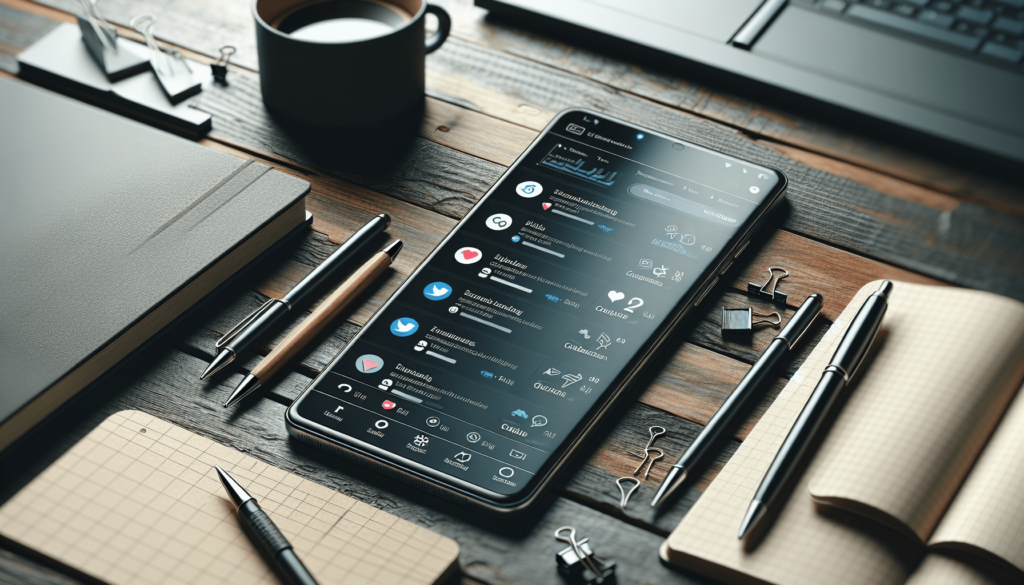You’re always looking for ways to improve your social media strategy and boost engagement, right? Social listening might be the game-changer you’ve been searching for. By tuning into what your audience is saying, you can gain valuable insights into their needs, preferences, and pain points. This enables you to tailor your content, respond to trends swiftly, and build a more authentic connection with your followers. In “How Can You Use Social Listening To Enhance Your Social Media Strategy?” you’ll discover practical tips on leveraging this powerful tool to stay ahead of the curve and foster a loyal community.
How Can You Use Social Listening To Enhance Your Social Media Strategy?
Have you ever wondered what people are saying about your brand online? Imagine being able to step into a room filled with your target audience and listen to their conversations, feedback, and concerns. This is where social listening comes into play. But how can you use social listening to enhance your social media strategy?
What is Social Listening?
Social listening involves tracking conversations around specific phrases, words, or brands and then leveraging insights to discover opportunities or create content for those audiences. It’s more than just keeping tabs on metrics; it’s about understanding the social landscape and your place within it.
Difference Between Social Listening and Monitoring
You might think social listening is just another term for social media monitoring, but they’re distinctly different. Monitoring involves tracking mentions of your brand and responding to them. Social listening, on the other hand, digs deeper by analyzing these conversations to garner actionable insights.
| Metric | Social Monitoring | Social Listening |
|---|---|---|
| Purpose | Track mentions & respond | Analyze conversations for insights |
| Focus | Specific posts or brand mentions | Trends, sentiment, and broader context |
| Outcome | Customer service, immediate response | Strategy development, marketing refinement |
| Tools | Hootsuite, Google Alerts | Brand24, Talkwalker, Sprout Social |
Why Social Listening is Crucial
Understanding why social listening is essential can dramatically change how you interact with your audience. Think of it as the superpower that lets you read between the lines of social media interactions.
Benefits You Can’t Ignore
Social listening offers numerous advantages:
- Customer Insights: By understanding what your audience discusses, you can tailor your products, services, and content more precisely to fit their needs.
- Trend Identification: Catching early trends can position your brand as a leader.
- Competitor Analysis: Observe how your competitors are performing and adapt your strategies to outperform them.
- Crisis Management: Identifying and addressing a brewing crisis before it escalates can save your brand’s reputation.
- Better Engagement: Engaging with real-time conversations helps you stay relevant.
Real-life Examples
Consider Nike. They use social listening to glean insights into consumer preferences, which helps in tailoring marketing campaigns effectively. Similarly, Starbucks gauges customer satisfaction and garners feedback through social listening tools.

How to Implement Social Listening
Implementing social listening into your strategy requires planning and the right set of tools. Here’s how you can go about it effectively.
Setting Clear Goals
Before diving into social listening, define what you aim to achieve. Your objectives could range from tracking brand reputation to improving customer support or identifying market gaps.
- Brand Awareness: Are people talking positively about your brand?
- Product Feedback: What are customers saying about your product features?
- Competitive Intelligence: How do you measure up against competitors?
Choosing the Right Tools
The market is flooded with social listening tools, each offering unique features. Select a tool that aligns with your goals and budget.
| Tool | Key Features | Pricing (as of 2023) |
|---|---|---|
| Brandwatch | AI-driven insights, competitor analysis | Starts at $800/month |
| Talkwalker | Social listening and analytics, multilingual support | Starts at $9,600/year |
| Mention | Real-time monitoring, customizable alerts | Starts at $29/month |
| Sprinklr | Unified platform, advanced analytics | Customized pricing |
Identify Key Metrics
Once your goals and tools are set, identify the key metrics to track:
- Volume of Mentions: Total number of mentions over a period.
- Sentiment Analysis: Understanding the tone of online conversations about your brand.
- Engagement Metrics: Comments, shares, and likes on your posts.
- Share of Voice: Comparison of your brand mentions to competitors.
Practical Application of Social Listening
Understanding theory is one thing, but how do you put this into practice? Let’s delve into how you can integrate social listening into your daily social media management.
Monitoring Conversations
Regularly check in on what people are saying about your brand, your industry, and your competitors. Use your chosen tools to set up alerts and create dashboards to centralize this information.
Analyzing Sentiments
Sentiments can be positive, negative, or neutral. Analyzing this can help you understand public perceptions and adjust your strategies accordingly. Negative trends can be particularly worth investigating to identify pain points.
Engaging with Your Audience
Once you have insights, the next step is to engage. Whether replying to comments, addressing concerns, or even just acknowledging a mention, active engagement can enhance customer relations.
Adapting Strategies
Social listening isn’t a one-and-done task. Use your gathered insights to refine your campaigns, develop new product features, or shift your market positioning.

Advanced Techniques
When you’re comfortable with the basics, you can move on to advanced social listening techniques for deeper insights.
Tokenizing Conversations
Break down conversations into tokens or smaller pieces of data to identify specific trends, keywords, or topics. This technique allows for a more granular analysis of what your audience is talking about.
Benchmarking Competitors
Use social listening to create a comprehensive competitor analysis. Track their social performance, audience engagement, and sentiment to identify gaps you can exploit.
Crisis Management
Set up automated alerts for any sudden spike in negative mentions. This helps you act quickly and efficiently in mitigating potential crises.
Challenges and Solutions
While social listening offers immense benefits, it doesn’t come without challenges. Here’s how to tackle them effectively.
Data Overload
Too much data can be overwhelming and paralyzing. Focus on key metrics that directly impact your goals. Use filters within your tools to sift through only the most relevant data.
Interpreting Sentiment
AI tools aren’t perfect and may sometimes misunderstand sarcasm or context. Combine automated tools with manual reviews to ensure accurate interpretations.
Privacy Concerns
Respect user privacy and comply with all legal requirements, such as GDPR. Make sure your monitoring practices are transparent and ethical.
Case Studies
Case Study 1: Oreo
Oreo used social listening during the Super Bowl blackout to seize the moment with a timely tweet. This led to massive engagement and positive brand perception.
Case Study 2: Southwest Airlines
Southwest Airlines uses social listening to manage customer service. By quickly addressing complaints and feedback, they have significantly improved customer satisfaction.
Best Practices
To get the most out of social listening, follow these best practices:
- Regularly Update Your Keywords: Ensure your key phrases, words, and hashtags are relevant to current conversations.
- Automate Reports: Schedule regular reports to keep track of key metrics and trends.
- Involve Multiple Departments: Share insights across departments like marketing, product development, and customer service.
Conclusion
Social listening is not just a fancy term but a powerful tool that can significantly enhance your social media strategy. By understanding what people are saying about your brand, you can make informed decisions, engage better with your audience, and stay ahead of your competitors. So, why wait? Start leveraging social listening today to take your social media strategy to the next level!

